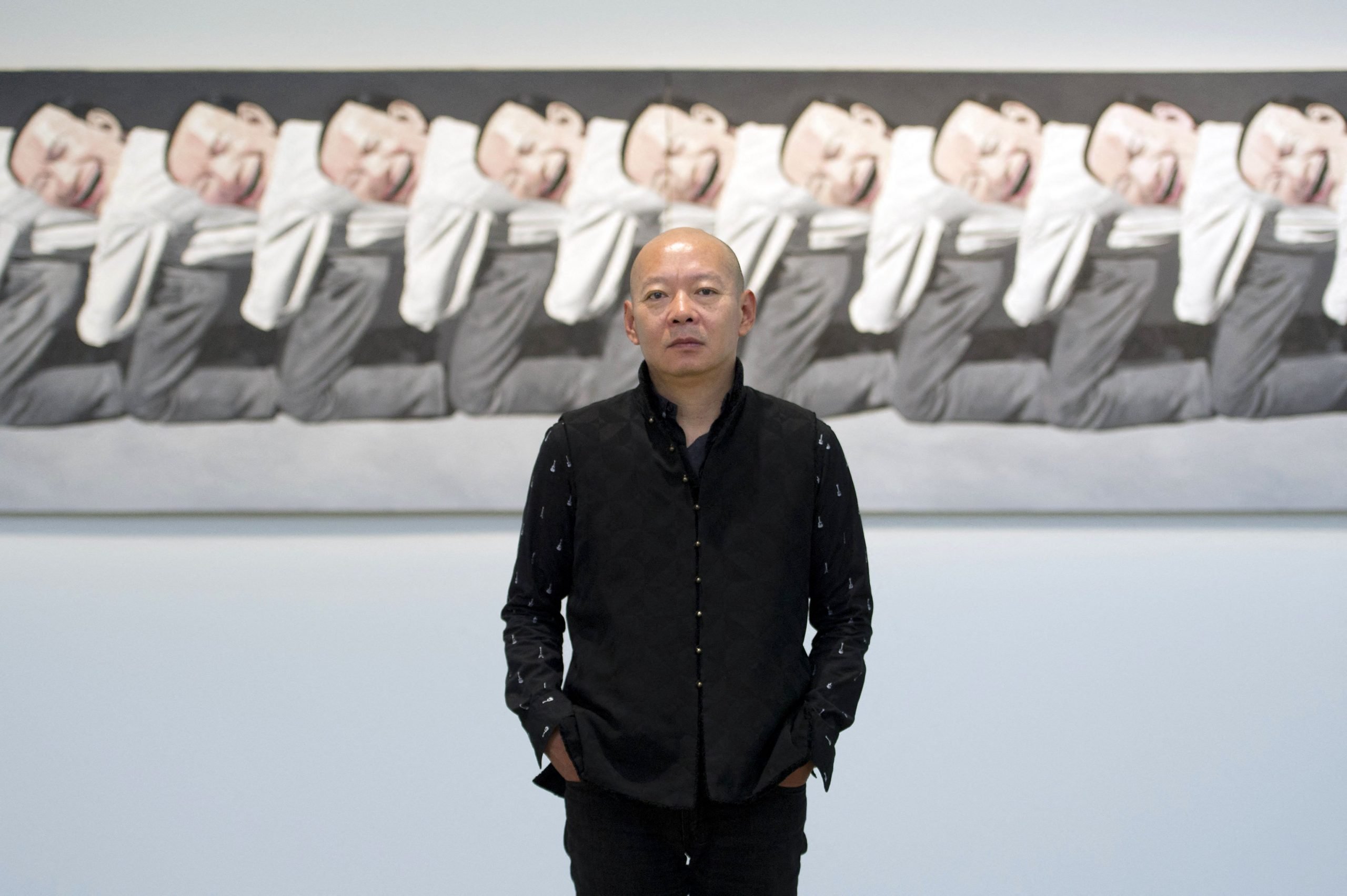
If you were planning to get your hands on Yue Minjun’s first NFTs, let’s hope you were swift. Just two hours after the artist’s debut Web3 collection featuring his celebrated “laughing man” self-portraits dropped on August 8, it sold out, raking in $1 million.
That result, post-crypto crash, surprised even Yue himself.
“I had little expectation,” the Beijing-based artist told Artnet News. “I just believed it an interesting time to pursue my digital concepts within Web3 while others are running from it.”
Titled “Boundless,” the series is made up of 999 PFPs (profile pictures) centered on the same grinning mien, a Yue hallmark. The collection contains 999 variations of the laughing man—his skin by turns pink, blue, and yellow; his head variously adorned with horns, sunflowers, and ladybirds—created using a generative model based on hundreds of graphic layers.
“This is what drew me to the generative model as a tool. I can reinvent myself 999 times in the digital medium, which would take me another couple of decades with painting,” said Yue.
Yue Minjun, “Boundless” NFT collection (2023). Courtesy of LiveArt.
According to the artist, he had been toying with “digital concepts” since the 1990s, even in the absence of the technology to realize them. He tended instead toward his painting practice, establishing his “laughing man” motif across canvases and sculptures as an ironic representation of cynicism, and drawing widespread acclaim (and lately, ire from Chinese nationalists).
By 2007, with the sale of his keenly political Execution (1995) for a record £2.9 million ($5.9 million) at Sotheby’s, Yue had become one of the bestselling Chinese contemporary artists.
He insisted, however, that his entree into Web3 was less about cashing in, speaking instead about a “brave new digital world” limited only by his imagination. And with the crypto boom long past, he felt the moment was ripe for him.
“I needed to see where [the Web3 space] would settle, how it would evolve, survive even. I needed to see a little more maturity and understanding that a space to collect digital art is not the same space where you can gamble on crypto,” he said. “Now that the speculative gambling culture is not as prevalent, will people respond to my digital work the same way they’ve responded to my physical work?”
That the answer has been a resounding “yes” overwhelmed Yue, who has watched collectors share and discuss their acquisitions over social media: “I’ve never really felt this type of camaraderie [and] community around my art before—it’s quite an experience.”
Yue Minjun, “Boundless” NFT collection (2023). Courtesy of LiveArt.
“Boundless,” launched in partnership with digital art platform LiveArt (which was also behind photographer Chen Man’s NFT debut), marks but the first “access point” to Yue’s larger Web3 project, dubbed Kingdom of the Laughing Man. Other drops are planned, as are initiatives such as the opportunity to acquire prints of NFTs and even a metaverse.
“Think of it as Yue Minjun funland, but we also come together to solve world issues,” he explained. “It sounds out there, but I’ve been conceptualizing it for 30 years.”
For Yue, his new digital practice remains separate from painting practice—the former medium, after all, enabling him to create work that defies the paintbrush. He’s here, he emphasized, for its “boundless possibilities.”
“Obviously, most people in my world thought it a little crazy to go into the NFT space now. The market is nowhere near what it was—for me, that’s an opportunity,” he said. “If Web3 is the future, now is the time to enter, after the hyped craziness. It has allowed me to reinvent myself in a new medium and connect with the next generation of collectors. It’s tremendously exciting.”
More Trending Stories:
Blue-Chip Artworks Seized From Top Portuguese Collector Will Be Featured in New Art Museum in Lisbon